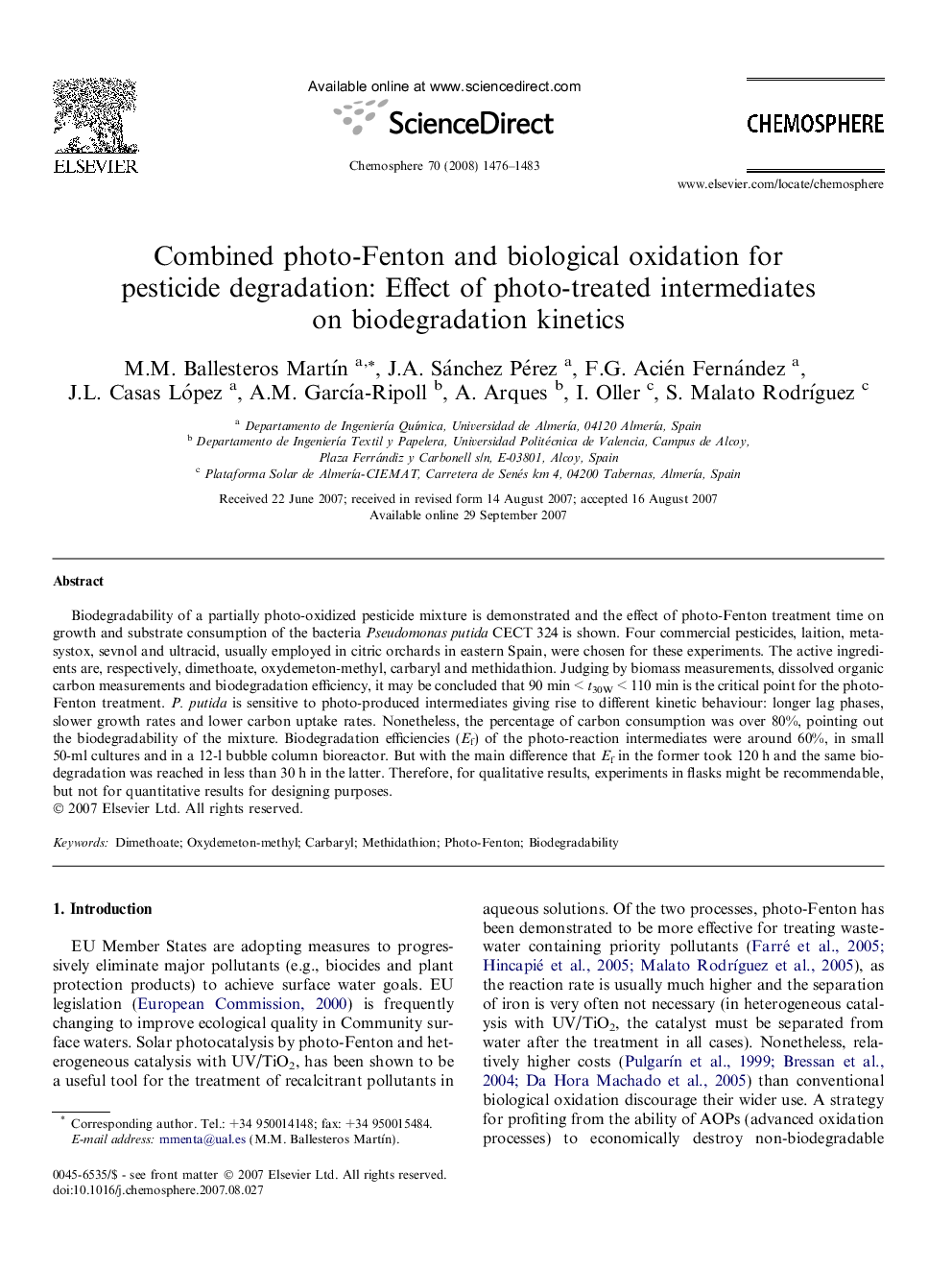| Article ID | Journal | Published Year | Pages | File Type |
|---|---|---|---|---|
| 4414850 | Chemosphere | 2008 | 8 Pages |
Biodegradability of a partially photo-oxidized pesticide mixture is demonstrated and the effect of photo-Fenton treatment time on growth and substrate consumption of the bacteria Pseudomonas putida CECT 324 is shown. Four commercial pesticides, laition, metasystox, sevnol and ultracid, usually employed in citric orchards in eastern Spain, were chosen for these experiments. The active ingredients are, respectively, dimethoate, oxydemeton-methyl, carbaryl and methidathion. Judging by biomass measurements, dissolved organic carbon measurements and biodegradation efficiency, it may be concluded that 90 min < t30W < 110 min is the critical point for the photo-Fenton treatment. P. putida is sensitive to photo-produced intermediates giving rise to different kinetic behaviour: longer lag phases, slower growth rates and lower carbon uptake rates. Nonetheless, the percentage of carbon consumption was over 80%, pointing out the biodegradability of the mixture. Biodegradation efficiencies (Ef) of the photo-reaction intermediates were around 60%, in small 50-ml cultures and in a 12-l bubble column bioreactor. But with the main difference that Ef in the former took 120 h and the same biodegradation was reached in less than 30 h in the latter. Therefore, for qualitative results, experiments in flasks might be recommendable, but not for quantitative results for designing purposes.
